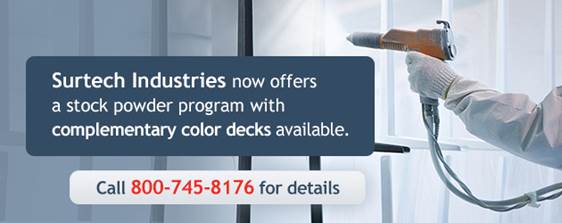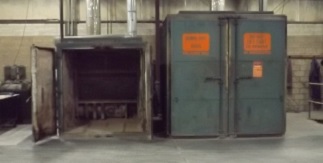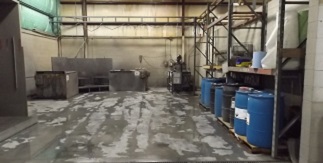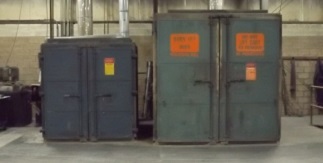
What Is the Powder-Coating Process?
Powder coating is an increasingly popular method for providing a protective and/or decorative coating on metallic objects. Unlike liquid paints, a powder coat is a dry material that will not drip or run upon application. While powder coating is most commonly used on metals such as iron or steel, it can also work well on nonmetallic materials such as ceramic, glass and even wood.
How to Powder Coat
The powder-coat process entails the application of electrostatically charged particles onto the surface of the substrate. In a typical powder-coating system, a feeder unit delivers the powder to an electrostatic gun. The feeder unit also controls the flow of powder to the gun. The gun emits the powder in the form of a diffused cloud. When combined with an electrical field charge provided by a low-amperage power unit, the charged particles seek out and adhere to the surface of the substrate.
Upon application of the coating, the next step in the powder-coating process is curing, which involves baking the workpiece in a specially designed oven. Curing results in the formation of a protective skin and promotes coating adhesion. In general, curing is performed at 400 F for approximately 20-30 minutes, although these parameters can vary based on the type of powder coating.
Surface preparation/pretreatment is also essential for achieving a successful powder-coating outcome. This normally entails the removal of grease, oil, dirt and other materials via chemical, physical or mechanical methods to clean the surface and promote coating adhesion. Pretreating the workpiece with chemical compounds can enhance the coating’s performance, durability and corrosion resistance.
What Are the Advantage of the Powder-Coating Process?
The powder-coating process is extremely efficient — most jobs require only one coat, which helps to minimize project costs. Powder coating is cheaper than wet paint and results in lower energy and disposal costs. It is also easy to adapt the coating thickness to meet the protective requirements of the project. It’s possible to achieve greater thickness than liquid paint while still maintaining coating integrity.
Powder coating is an excellent choice for applications where aesthetic appeal is important. Coatings are available in a wide variety of colors and specialty effects to produce the desired appearance of the workpiece. Powder coating also exhibits fewer differences between horizontally and vertically coated surfaces, which ensures a more consistent appearance throughout the product.
In an era where compliance with environmental regulations is essential for companies in all industries, the powder-coating process offers an eco-friendly alternative to liquid painting and other commonly applied metal finishing techniques. Most powder-coat products are free of potentially harmful chemical solves and release few or no volatile organic compounds (VOC) into the atmosphere.
Surtech Can Meet All Your Powder-Coating Needs
At Surtech, we know how to powder coat all types of metal and nonmetallic materials to any specification. Our 66,000-square-foot facility contains the most advanced powder-coating equipment and machinery. Contact us for more information and a free project quote today.



Contact Us!
- Address:
- 915 Borom Rd.
York, PA17404 - Phone:
- 717-767-6808
1-800-745-8176 - Online:
- Contact Us to request a free quote!
- Employee Directory:
- View our Employee Directory.